A grant from the Open Rivers Programme has enabled the removal of a number of small dams in the catchment of the Vindel River, in the Nordic Taiga rewilding landscape. By enabling the free flow of water, this will help to revitalise waterscapes and the wildlife populations they support.
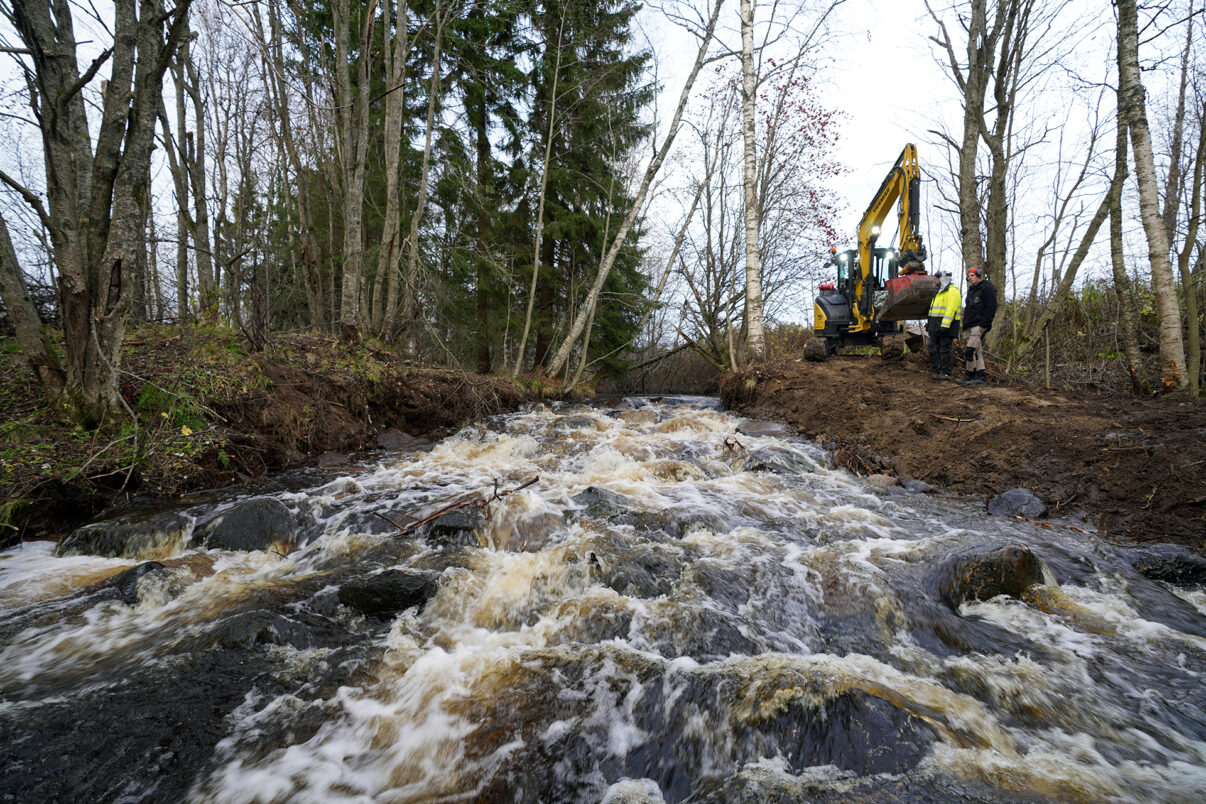
Reconnecting waterways
With financial support from the Open Rivers Programme, the Rewilding Sweden team have overseen the removal of four small dams in the Nordic Taiga rewilding landscape. The barriers were all located within the Vindelälven-Juhttátahkka Biosphere Reserve in the county of Västerbotten, to the northwest of the city of Umeå.
The removal of the four barriers – called the Strömbäcksdammen, Långträskdammen, Långhjuksnordammen, and Alträskdammen – will enhance the connectivity of 84 kilometres of waterways. These waterways run into the free-flowing, 450-kilometre long Vindel – the largest tributary in Sweden – which itself flows into the Ume River. A second grant from the Open Rivers Programme will see five more dams in the Vindel River catchment investigated for the possibility of removal by the Rewilding Sweden team next year.
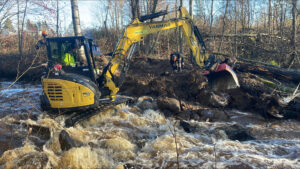
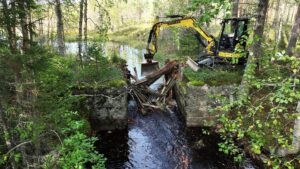
Healthy, free-flowing rivers
Artificial barriers are considered one of the main threats to aquatic and riparian biodiversity on a global scale. They significantly degrade river ecosystems by causing habitat loss and fragmentation, altering the distribution of sediments and nutrients, and concentrating pollutants.
Removing the dams in the Vindel River catchment will help to re-establish natural river processes, enhancing overall the overall health of the river system and revitalising aquatic habitats. In some cases, wooden flooring that had been laid down on the bed of the waterway was also removed.
“The dams and flooring were physical, engineered obstacles that were preventing a range of fish and other aquatic species from being able to move upstream and downstream,” explains Rewilding Sweden field officer Isak Edström. “So removing them will aid migration. The restoration of natural flow patterns and the transport of seeds and sediment will also enhance the functionality of the local ecosystem, benefitting a wide range of animals and plants.”
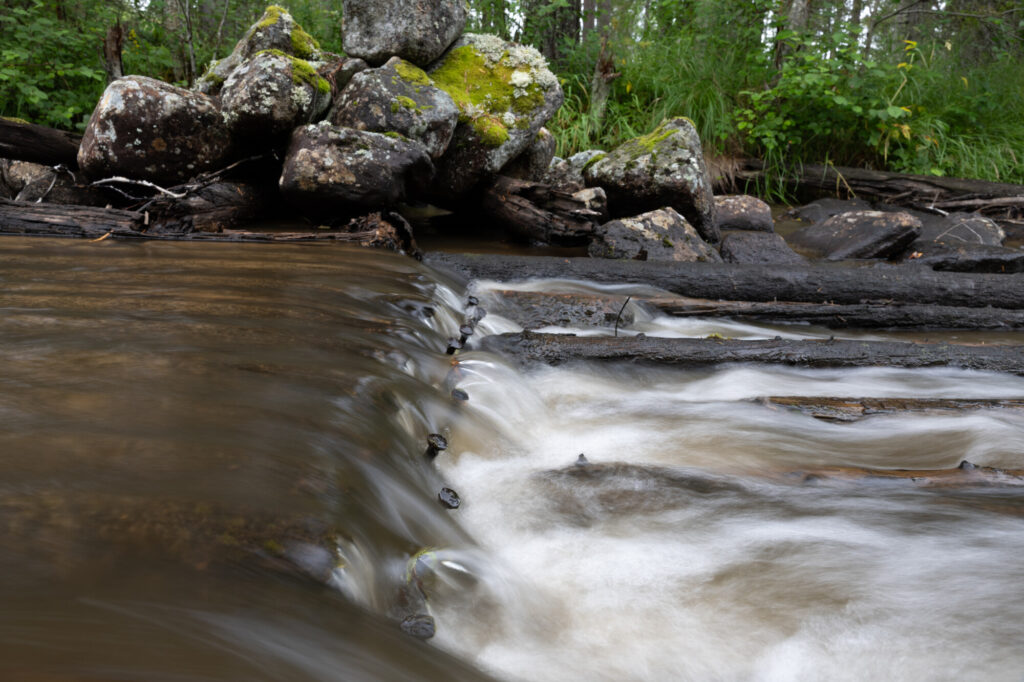
Overcoming challenges
One of the main challenges with the barrier removal was to maintain the water level upstream.
“When many of these dams were built, boulders were moved downstream to increase the difference in height above and below them,” explains Isak Edström. “Removing the dams without putting these stones back would have led to an unnatural drop in water levels above where the dams were located. So it was important to construct natural tapered thresholds where the dams were. This also helps to improve the natural aesthetics of the waterway and prevents the water flow from becoming so great that it hinders the movement of fish and other wildlife species.”
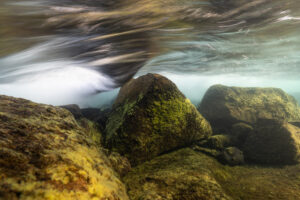

Towards wilder waterscapes
The removal of riverine barriers is part of Rewilding Sweden’s long-term strategy to rewild the catchment of the Vindel River by maximising the outcomes of previous large-scale river restoration work in the area, and by connecting with further rewilding efforts in the pipeline. By adopting a “waterscape” approach, which aims to enhance blue-green corridors for nature and wildlife by restoring the free flow of water and enhancing the connection between rivers and surrounding landscapes, the team are aiming to create ecological synergies that amplify the benefits of their practical rewilding efforts.
The Vindel River catchment is one of two areas where the Rewilding Sweden team are engaged in long-term rewilding efforts. In addition to removing dams, Rewilding Sweden is also focusing on restoring drained wetlands and degraded forests here. The restoration of forests will enhance biodiversity and support reindeer migration through a landscape dominated by commercial forestry.

A legacy of dams
Of the four barriers that have or will be removed in the Vindel River catchment this year, three are a legacy of Sweden’s long history of industrial-scale forestry, which has had a significant impact on the landscape.
From the 1850s, before the age of road and rail, Sweden’s waterways were engineered into unobstructed channels to create a vast fluvial transport network. Rapids were removed and bends straightened to allow logs to float hundreds of kilometres downstream for processing, while wooden flooring was often laid down on the beds of waterways to ease passage. An extensive network of drainage ditches, connected to rivers, was dug to create drier soils for improved tree growth. Thousands of small dams were also built, to artificially raise riverine water levels in the spring. When logs were ready for transportation, these dams were opened and the timber was carried downstream on the resultant flow.
“There are several hundred of these obsolete dams across the Vindel River catchment and the greater Swedish landscape,” says Isak Edström. “Some have been removed already, but those that remain are all having a negative ecological impact. When it comes to enhancing the health and functionality of rivers and the areas connected to them, removing these dams can be thought of as picking the low-hanging fruit.”
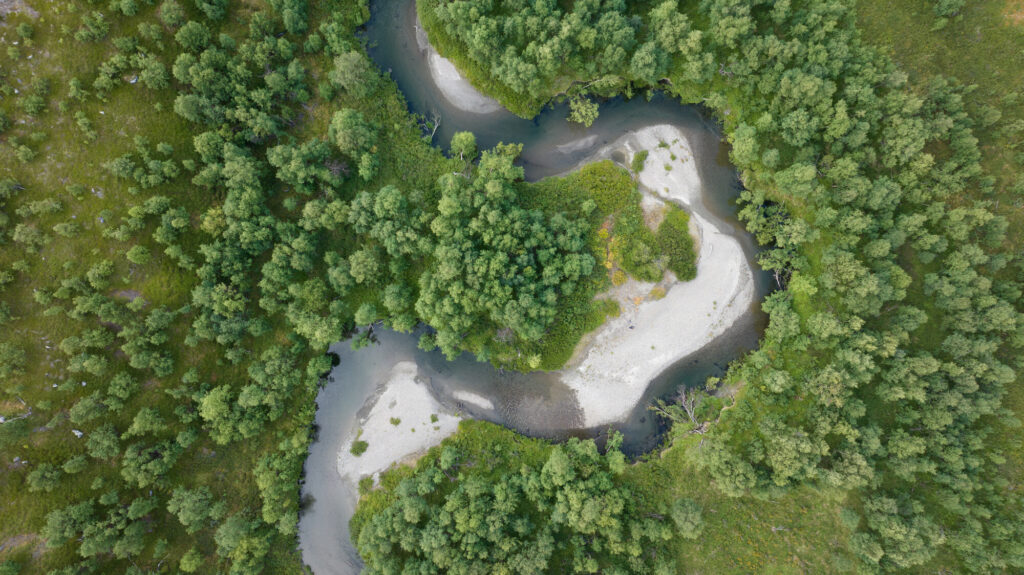
Breaking barriers on a European scale
Rivers deliver a wide range of essential benefits to people and nature. With climate change bringing new challenges, we urgently need a new relationship with water – accepting it into our landscapes again, and rewilding it where we can. This means giving rivers the space and freedom to manage themselves, with dynamic, natural processes such as the free flow of water and flooding returning them to health. This is what Rewilding Europe is doing in many of its own landscapes, through measures such as dam removal.
Dam removal efforts in the Vindel River catchment align fully with European policies on watercourse management, which aim to restore biodiversity and ecological connectivity. The efforts of the Rewilding Sweden team will contribute to achieving one of the fundamental goals of the European Biodiversity Strategy, which aims to restore free-flowing conditions on at least 25,000 kilometres of European rivers by 2030.
Complementing the funding provided by the Open Rivers Programme, financial support for the barrier removal was also provided by Rewilding Europe, which has been part of the European movement for free-flowing rivers for many years as a founding partner of Dam Removal Europe.
